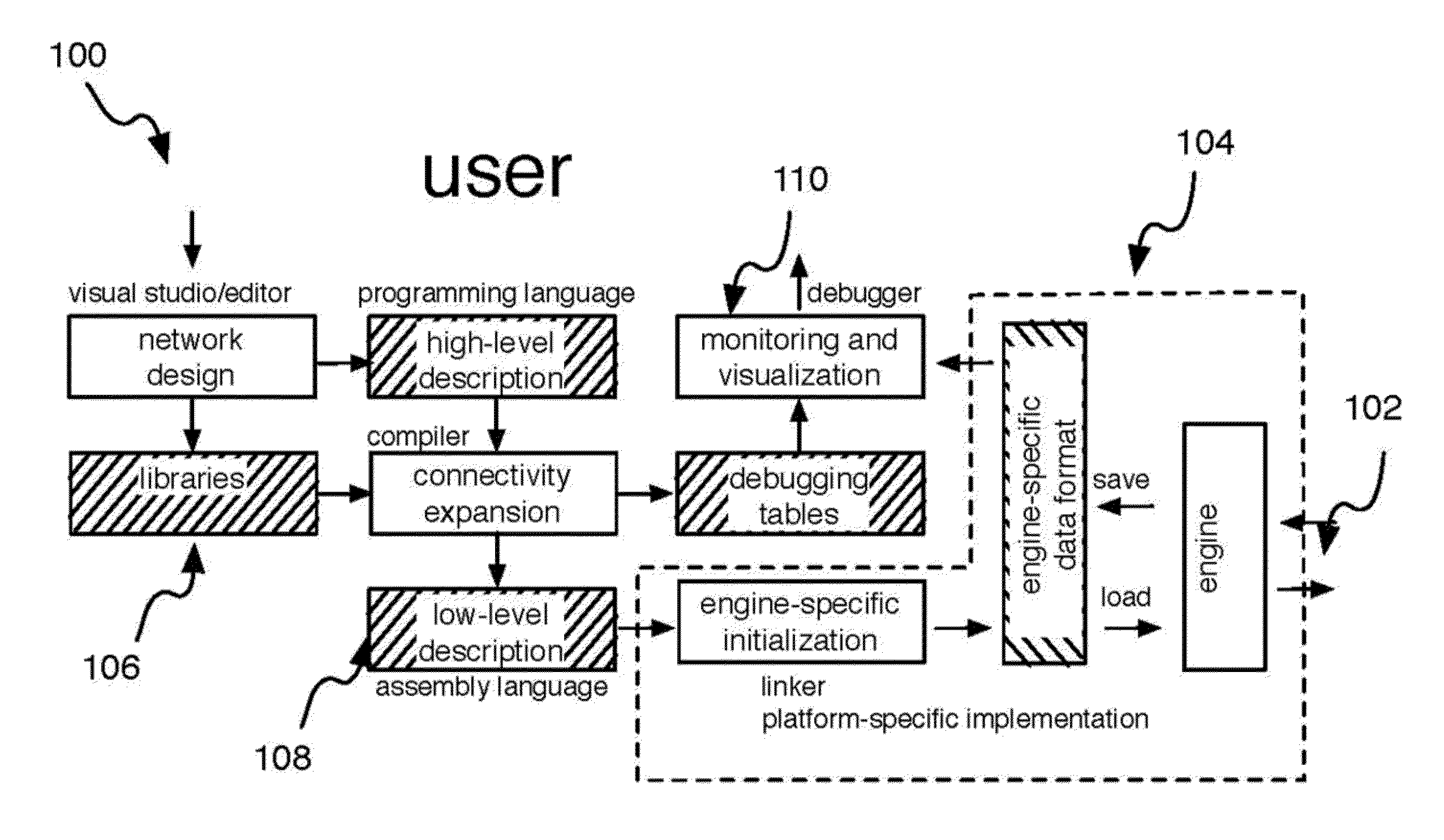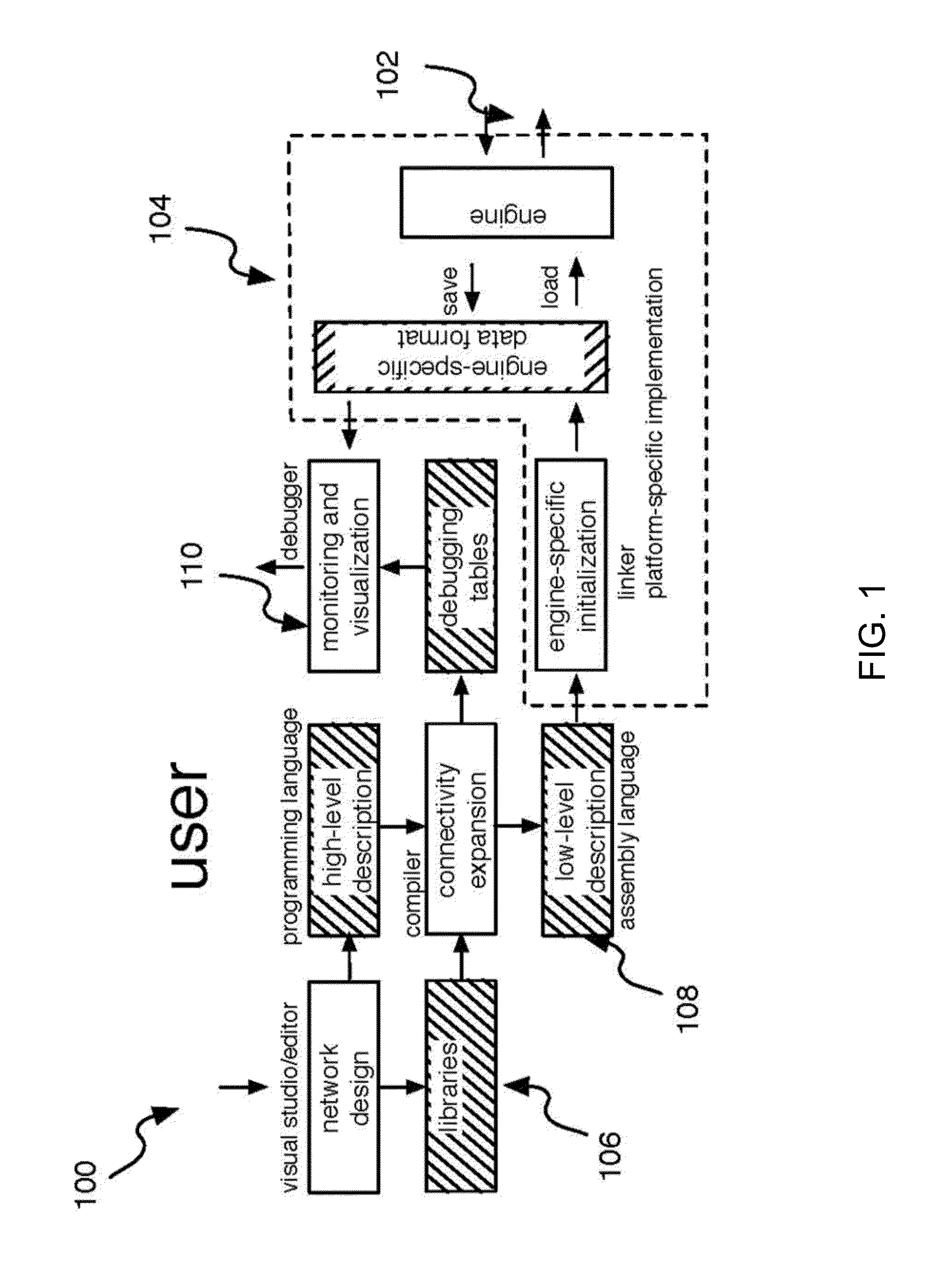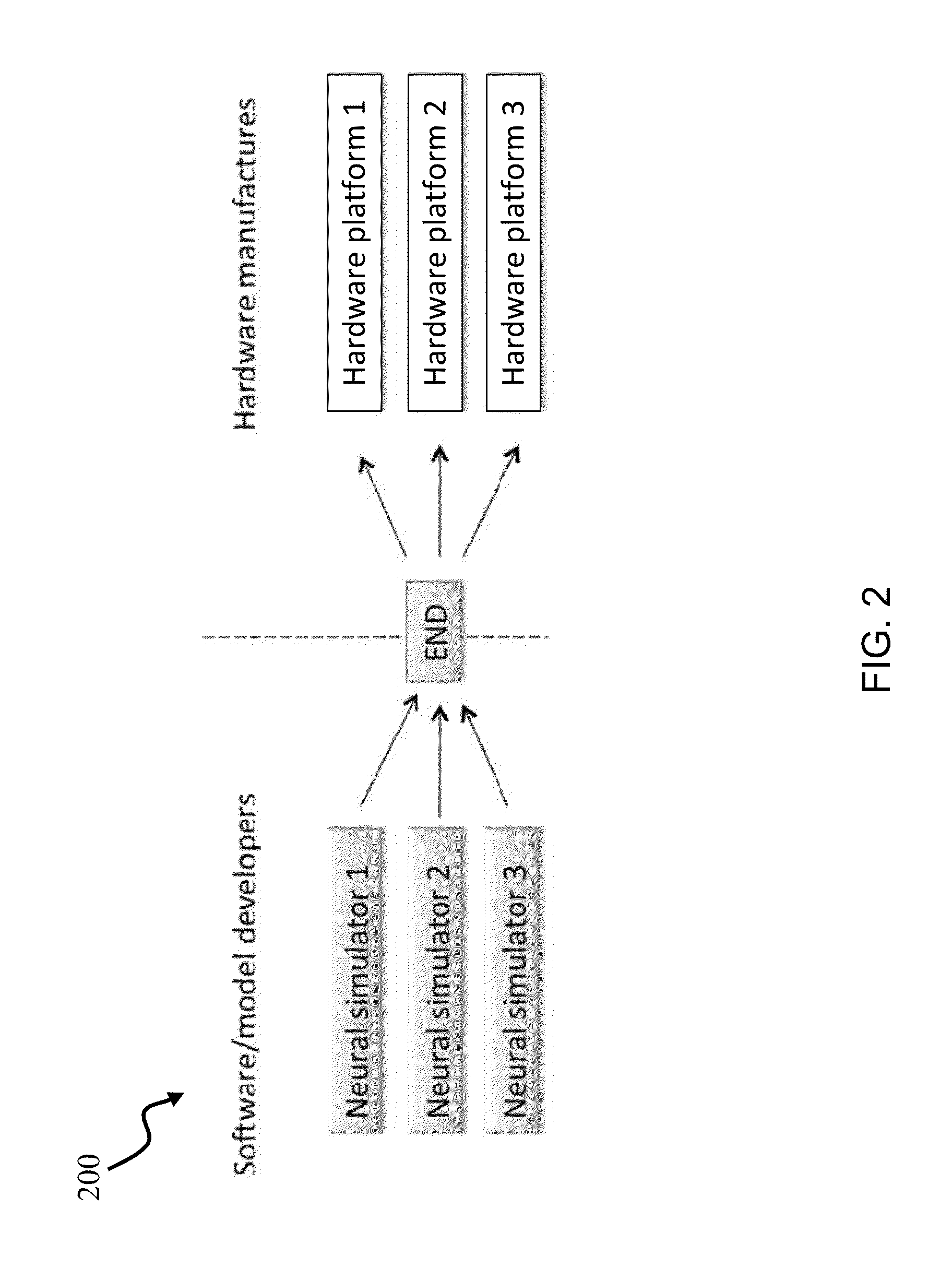Elementary network description for efficient implementation of event-triggered plasticity rules in neuromorphic systems
- Summary
- Abstract
- Description
- Claims
- Application Information
AI Technical Summary
Benefits of technology
Problems solved by technology
Method used
Image
Examples
example 1
spnet
[0118]The spnet typically comprises N=Ne+Ni=1000 neurons, where Ne=800 excitatory neurons and Ni=200 inhibitory neurons. Each neuron typically comprises M=100 synapses per neuron. All excitatory synapses are plastic (STDP), with a random delay ranging between 1 ms and D=20 ms. The inhibitory->excitatory synapses are non-plastic with a delay of D=1 ms. There are no inh→inh synapses. The low-level END description of the model is expressed as follows. The first Ne units are populated by Ne excitatory units:
unit_id = 1:800
Next, Ni inhibitory units are records of the class are populated as:
unit_id = 801:1000
The spnet class is then declared as shown in the Listing 1 below:
Listing 1.unit_class_id=‘QIF2’update_rule = ‘v+=0.5*((0.04*v+5).*v+140−u+I);v+=0.5*((0.04*v+5).*v+140−u+I);’event_condition = ‘v>30’after_event_rule = ‘v=−65;’initialization = ‘float v=−65; float u=0.2*v; float I=0’unit_class_id=‘exc’update_rule = ‘u+=0.02.*(0.2*v−u);’after_event_rule = ‘u+=8; last_spike=now’initial...
example 2
Global Variables
[0165]
name = ‘DA_update’code = ‘DA = exc[3].v + inh[1].u’init = ‘analog DA = 0’update_rule = ‘DA_update’
Example 3
spnet
[0166]The standard spnet network has N=1000 neurons; among them are Ne=800 excitatory neurons and Ni=200 inhibitory neurons, with M=100 synapses per neuron. All excitatory synapses are plastic (STDP), with random delay between 1 and D=20 ms. The inhibitory→excitatory synapses are non-plastic with delay D=1 ms. There are no inh→inh synapses. The low-level description of the model is below.
name=‘QIF2’ / / only the v equation definedcode = ‘v+=(0.04*v+5).*v+140+I; I=4*rand( ) / MAX_RAND’name=‘spike’code = ‘v>30’name = ‘exc’update_rule = ‘u+=0.02*(0.2*v−u); I−=u;’update_rule = ‘QIF2’event_condition = ‘spike’after_event_rule = ‘v=−65; u+=8; last_spike=now’init = ‘analog v=−70, u=−14, I=0; int last_spike=−1000’name=‘inh’ / / inhibitory neuronupdate_rule = ‘u+=0.1.*(0.2*v−u); I−=u;’update_rule = ‘QIF2’event_condition = ‘spike’after_event_rule = ‘v=−65; u+=2;’ini...
example 3
spnet with No Delays
[0214]A network of randomly connected 800 excitatory and 200 inhibitory neurons (100 of exc→all and inh→exc connections) can be defined with excitatory synapses subject to STDP and no conduction delays (for conduction delays, see next example).
Listing 6QIF = rulecode = ‘v+=0.5f*((0.04f*v+5.0f)*v+140.0f−u+I);v+=0.5f*((0.04f*v+5.0f)*v+140.0f−u+I); I=0.0f;’exc = elementcode = ‘u+=0.02f*(0.2f*v−u);’code = QIFrank = 0init = ‘float v=−65.0f; float u=−13.0f; float I=0.0f; intlast_spike=−1000’1:800 = excinh = elementcode = ‘u+=0.01f*(0.2f*v−u);’code = QIFrank = 0init = ‘float v=−65.0f; float u=−13.0f; float I=0.0f; intlast_spike=−1000;’1:200 = inhspike = rulecode = ‘v>30’after_spike_reset_exc = eventtrigger_condition = spiketrigger_rank = 0.1target_rule = ‘u+=8; last_spike=now’target_rank = 0.2after_spike_reset_exctrigger = exc.1:800target = exc.1:800after_spike_reset_inh = eventtrigger_condition = spiketrigger_rank = 0.1target_rule = ‘u+=2; last_spike=now’target_rank = ...
PUM
 Login to View More
Login to View More Abstract
Description
Claims
Application Information
 Login to View More
Login to View More - R&D
- Intellectual Property
- Life Sciences
- Materials
- Tech Scout
- Unparalleled Data Quality
- Higher Quality Content
- 60% Fewer Hallucinations
Browse by: Latest US Patents, China's latest patents, Technical Efficacy Thesaurus, Application Domain, Technology Topic, Popular Technical Reports.
© 2025 PatSnap. All rights reserved.Legal|Privacy policy|Modern Slavery Act Transparency Statement|Sitemap|About US| Contact US: help@patsnap.com



